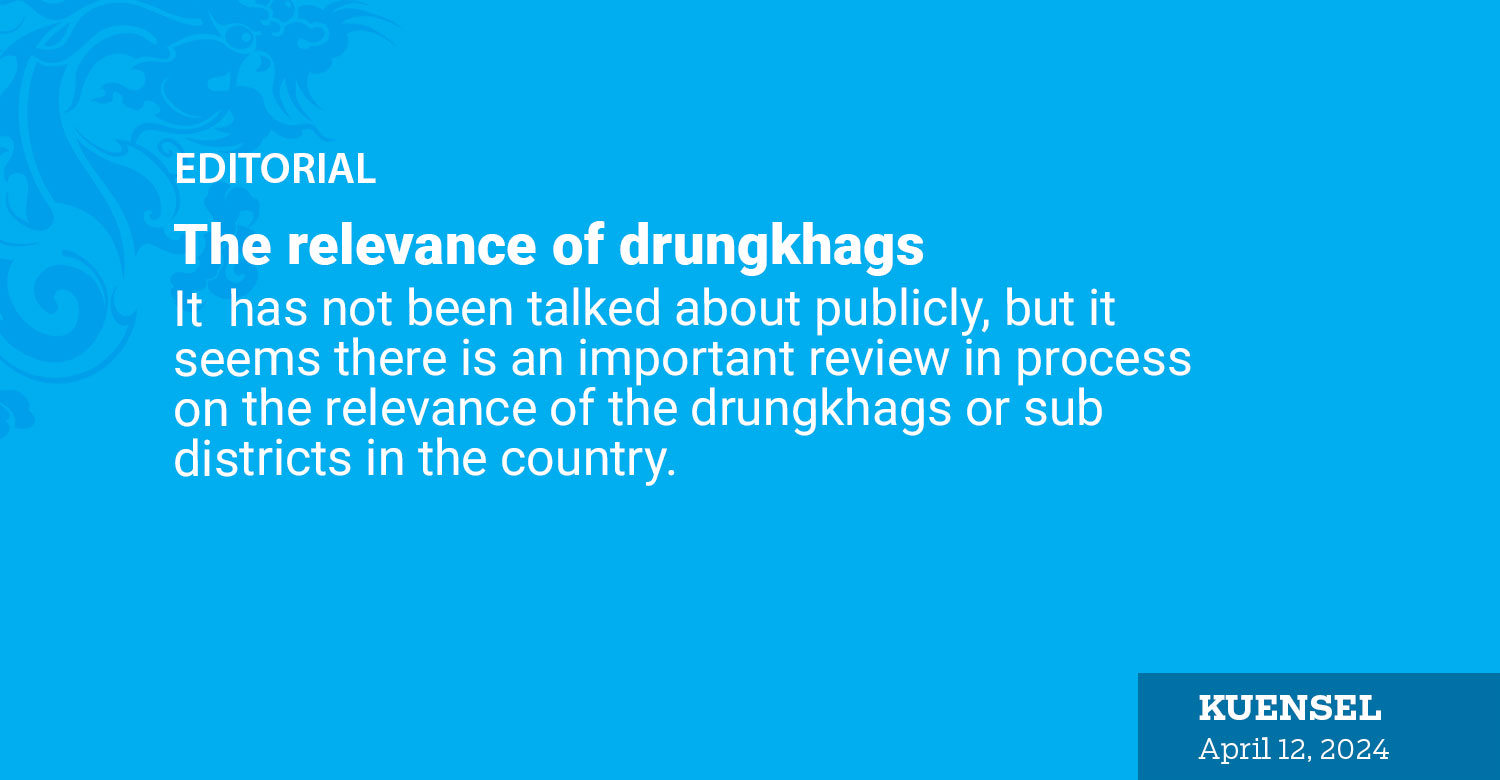It has not been talked about publicly, but it seems there is an important review in process on the relevance of the drungkhags or sub districts in the country.
Three of the 15 drungkhag: Weringla in Mongar, Thrimshing in Trashigang, and Sombaykha in Haa are currently without the administrator, the drungpa. Their appointment will depend on the outcome of the review. Some are already conclusive of the relevance, at least going by a locally elected leader, when he hinted that the drungpa is a powerless figure.
Like officials said, improved connectivity, both roads and telecommunications, and digitalisation of most public services has changed how public service is delivered. Drunkhags were created in the past in the big dzongkhags or in dzongkhags where connectivity made public service delivery difficult. It was to help people avail service without having to visit the dzongkhag headquarters, some of which required days of travel.
For instance, people of Weringla and Thrimsihing would have to walk to the nearest road point to then travel to Trashigang Dzong where the dzongkhag administration is located. Today besides telecommunications, farm roads and gewog roads crisscross the drungkhags.
The way the government runs its overall governance machinery has improved by leveraging ICT since the government launched the E- Government master plan as a catalyst for change a decade ago.
More importantly, if the head or the drungpa is without any decision making or financial authority, and therefore irrelevant, it is time we relook into the need of the post. Unlike the idea of merging the 205 gewogs that hit a wall even with research and study recommending merger, the drungpa is not an elected local government official. At least there is no political pressure unlike the elected gewog officials who are seen as influential in parliamentary elections.
If the function of the drungkhag is also to provide administrative assistance to the dzongkhag administration by supporting the gewogs, there is already a recommendation to merge the 205 gewogs to 101. A detailed report on the gewog merger is already on the Cabinet shelves and was presented to parliamentarians. The previous government even recommended amending the Local Government Act.
From the way drungkhas without drungpas are run today, the service is not affected. It is said that only human resource related power is delegated to the drungpa.
There is already a recommendation to close five to six drungkhag offices in the interior dzongkhags. Some drungkhags are important from a security point of view. Meanwhile, the relevance of the drungkhags will be reviewed during the local government restructuring exercise as part of the civil service transformation.
This makes it easier as the transformation exercise has already led to the merger of ministries, departments and closure of divisions. In some places, like in Sarpang, the transformation could mean even doing away with constituencies for parliamentary elections in the near future.


